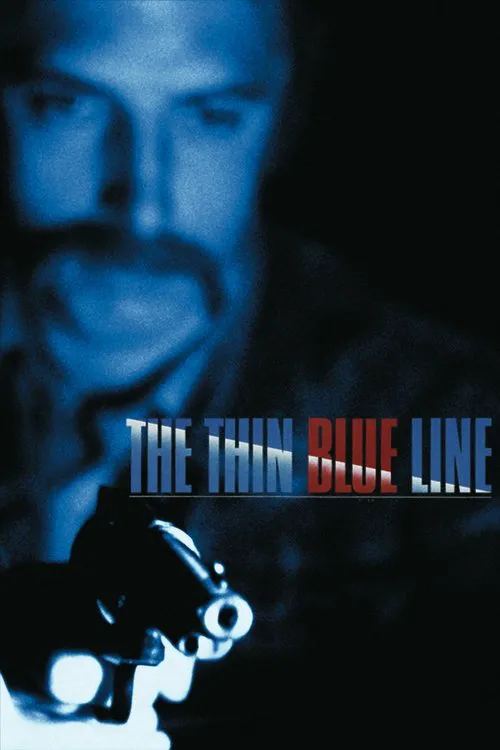The Thin Blue Line

Plot
The Thin Blue Line, released in 1988, is a thought-provoking documentary film directed and produced by Errol Morris. The film delves into the real-life murder of Dallas police officer Robert Wood, which took place on March 7, 1977, and the subsequent investigation. Morris masterfully weaves together dramatic re-creations of key events, in-depth interviews with key figures, and an examination of the complex case to raise questions about guilt, justice, and the American justice system. The film begins with a re-creation of the events surrounding Officer Wood's fatal shooting, which took place on a cold winter night. Morris sets the tone for the documentary, creating an eerie atmosphere as he narrates the events leading up to the murder. Through detailed re-creations and expert analysis, Morris paints a vivid picture of the crime scene, expertly capturing the emotions and tensions that surrounded the killing. At its core, The Thin Blue Line is a story about Randall Dale Adams, a 24-year-old drifter from Texas who was wrongly accused of the murder of Police Officer Wood. The film presents a meticulous examination of the evidence and testimony used against Adams, skillfully highlighting the inconsistencies, contradictions, and potential flaws that raise questions about the verdict. Morris's re-creation of the investigation and trial is masterfully done, highlighting the complexities and potential biases that influenced the outcome. Through interviews with key figures, including Randall Adams himself, his lawyers, and police investigators, Morris provides a poignant and disturbing portrayal of the events surrounding the murder and trial. Adams's narrative, presented in a calm and collected manner, is particularly striking, offering a glimpse into the personal struggles and emotional turmoil that he endured during and after the trial. These interviews, interwoven with the dramatic re-creations, serve as a powerful counterpoint to the official narrative presented during the trial. As the film progresses, Morris raises a pressing question: was Randall Adams guilty of the crime, or did he fall victim to a miscarriage of justice? Morris's investigation into the events surrounding the trial and the key players involved yields a compelling narrative that challenges the notion of Adams's guilt. Morris suggests that a number of factors, including the investigative methods employed by the police, the testimony of key witnesses, and the questionable tactics used by the prosecution, contributed to the conviction of an innocent man. The Thin Blue Line is also notable for its critique of the American justice system. Morris sheds light on the systemic problems that can lead to the conviction of innocent people, and the dangers of relying on flawed testimony and dubious evidence. The film raises questions about the validity of the justice system and the need for reform. Through Adams's case, Morris paints a disturbing picture of a system where the guilty may go free and the innocent may be imprisoned. Throughout the documentary, Morris's creative re-creations of key events, interviews, and dramatic re-enactments come together to create a gripping narrative that engages the viewer and encourages introspection. The Thin Blue Line is not simply a critique of the justice system; it is also an exploration of human emotions, the complexities of the human condition, and the fragility of guilt. Ultimately, The Thin Blue Line leaves the viewer with more questions than answers, a reflection of the complexities that underlie the case. Morris refuses to present a simple answer to the question of Adams's guilt or innocence, instead opting to raise the stakes and challenge the viewer to think critically about the case and the justice system. This thought-provoking film is a testament to Morris's innovative filmmaking style and his unwavering commitment to exploring the human condition. As the credits roll, the viewer is left to ponder the case of Randall Dale Adams, the justice system, and the complexities of guilt and innocence. The Thin Blue Line is a masterpiece of documentary filmmaking that continues to resonate long after the credits have rolled.
Reviews
Recommendations




